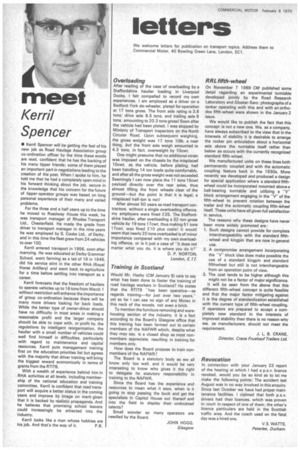RRL fifth-wheel
Page 44

If you've noticed an error in this article please click here to report it so we can fix it.
On November 7 1969 CM published some 'detail regarding an experimental turntable developed jointly by the Road Research Laboratory and Gloster-Saro; photographs of a tanker operating with this and with an orthodox fifth-wheel were shown in the January 2 issue.
We would like to publish the fact that this concept is not a new one. We, as a company, have always subscribed to the view that in the interests of stability it is desirable to arrange the rocker pin articulation about a horizontal axis above the turntable itself rather than below as occurs with the currently recognized standard fifth-wheel.
We manufactured units on these lines both permanently coupled and with the automatic coupling feature back in the 1930s. More recently we developed and produced a design for special application where a standard fifthwheel could be incorporated mounted above a ball-bearing turntable and utilizing a "V" block arrangement engaging in the -V" of the fifth-wheel to prevent rotation between the trailer and the automatic coupling fifth-Wheel itself. These units have all given full satisfaction in service.
The reasons why these designs have never been more widely promoted are: 1. Such designs cannot provide for complete interchangeability with the standard fifthwheel and kingpin that are now in general use.
2. A compromise arrangement incorporating the "V" block idea does make possible the use of a standard kingpin and standard fifthwheel but still is not interchangeable from an operation point of view.
3. The cost tends to be higher although this might not be a factor of major significance.
It will be seen from the above that this different fifth-wheel concept is quite feasible and that the major factor mitigating against it is the degree of standardization established with the current type of fifth-wheel coupling. If operators are prepared to accept a completely new standard in the interests of improved stability then there is no reason why we, as manufacturers, should not meet the requirement.
J. L. B. CRANE. Director, Crane Fruehauf Trailers Ltd.


















































































































































